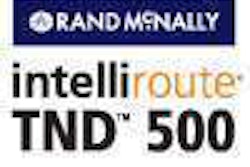Rolling west on Interstate 90 out of Chicago toward Rockford behind the wheel of an International ProStar 122 tractor, it was clear that Navistar’s engineers and executives weren’t kidding when they promised that their 2010 family of advanced exhaust gas recirculation (EGR) engines would perform at least as well as their predecessors.
In some ways, this isn’t surprising. Navistar, after all, is the only engine manufacturer that will not switch to selective catalytic reduction (SCR) systems next year. Thanks to credits issued by the U.S. Environmental Protection Agency rewarding early compliance with pre-2010 regulations, Navistar has been able to rely solely on its existing emissions reduction technology to meet next year’s stringent NOx reduction levels.
That’s not to say that Navistar will be forsaking EGR anytime soon – if ever. The company insists it is completely dedicated to its advanced EGR engine solution, and that a proprietary combination of high-speed onboard electronic control modules controlling high-pressure common-rail fuel systems gives its engineers unprecedented control of the entire combustion process in a diesel engine. And Navistar gives every indication it intends to stick with EGR technology long after its stockpile of EPA emissions credits has been used up.
At the same time, Ramin Younessi, vice president of product development and strategy for Navistar, says work continues on the company’s 2010-compliant 15-liter diesel engine, based on Caterpillar’s discontinued C-15 diesel engine. Younessi says the new engine will be available sometime next spring.
Meanwhile, Navistar’s three 2010-certified diesel engine families are ready to go come January. Navistar will offer two medium-duty models, as well as heavy-duty Big Bore 11- and 13-liter engines to meet a wide variety of trucking applications with ratings from 330 to 475 horsepower. Engineering changes for 2010 are minimal and include a new integrated engine brake, a more advanced single ECM, twin turbochargers with fixed vanes, a higher-pressure common rail fuel system and a two-stage EGR cooler.
Younessi says the engines have completed extreme temperature and altitude testing, delivering tailpipe emissions levels of .04 and .05 NOx and fuel economy numbers “equal to or better” than comparable Navistar 2007 engines. According to Jim Hebe, senior vice president of North American sales, 1,500 of the Big Bore engines – including “a few” of the 15-liter units – will be delivered to customers early next year to allow Navistar customers an early opportunity to evaluate their performance and verify the company’s singular approach to meeting EPA 2010.
Navistar’s medium-duty engines for 2010 will include the MaxxForce DT 9 and DT 10 inline 6-cylinder engines in 7.6- and 9.3-liter versions. Ratings range from 215 to 330 horsepower. Younessi again says that 2010 enhancements are minimal and include higher fuel-injection pressures, a new cylinder head design and a single EGR cooler.
At the low end of the spectrum, Younessi notes that the company’s MaxxForce 7.64-liter V-8 diesel engine actually has seen increased fuel economy numbers between 1 percent and 3 percent for 2010, according to in-house testing. The V-8 can be spec’d with ratings from 200 to 300 horsepower and includes new features such as higher fuel pressures, dual turbochargers, a more powerful single-unit ECM and a single EGR cooler.










